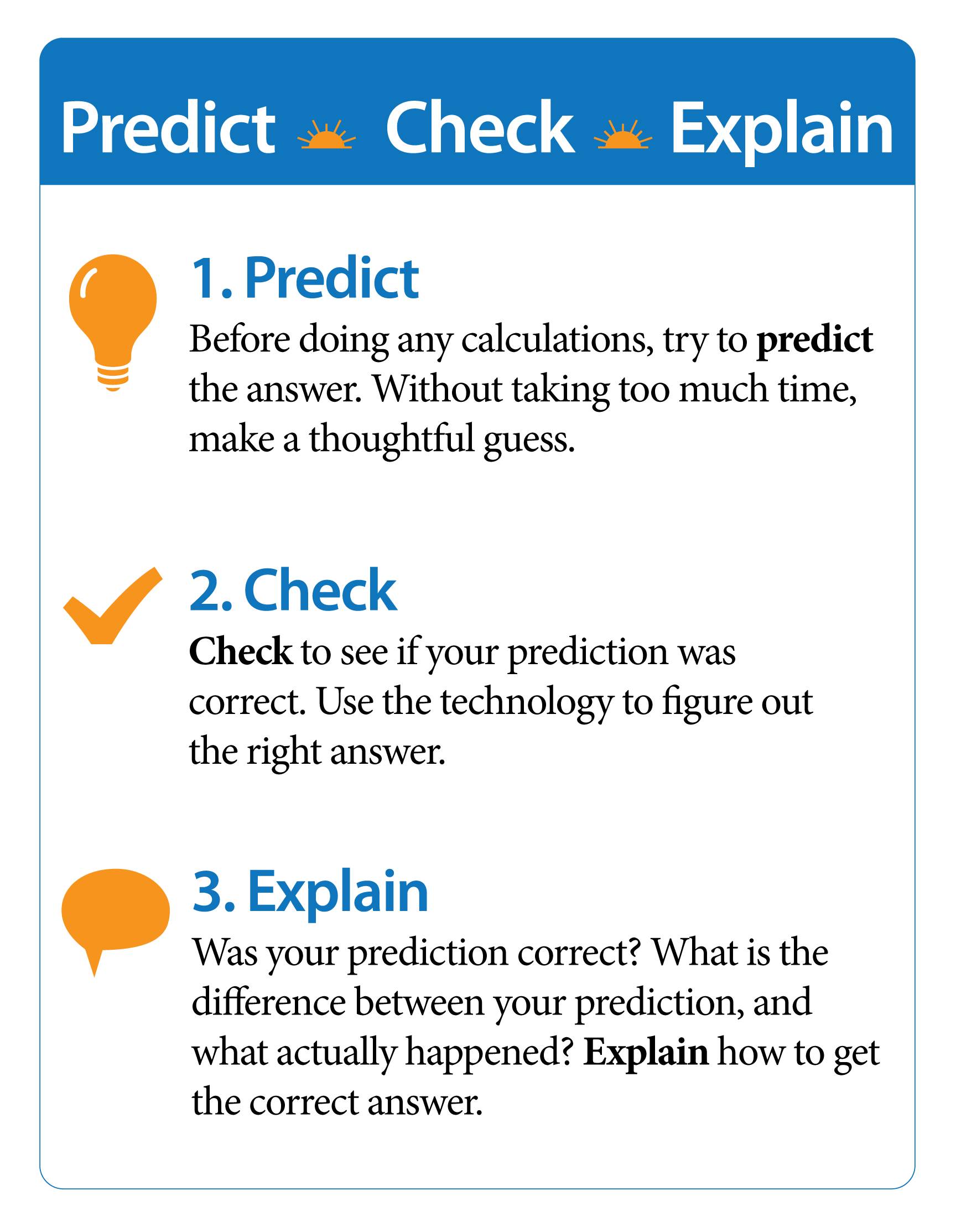
Each day, students engage in an ongoing story and solve new problems. To solve the problems, students use interactive mathematical representations to make a prediction, check it within a digital simulation, and explain what they see.

Before class begins, our teacher guide makes sure the teacher understands the problem students will be solving, the lesson’s learning goals, and the technology the students will be using. Also within the teacher guide, teachers can review common student misconceptions and differentiation strategies.
After a quick warm-up, the teacher will introduce the class to the day’s challenge. In their workbooks, students will use their intuition and past experience to predict a solution to the problem.
In small groups, students will turn to an interactive simulation to check their prediction. What’s important here is that no student in the classroom has to be corrected, or told their prediction was “wrong.” They’ll learn directly from their simulation whether their prediction was accurate, and they’ll be able to adjust their thinking in real time without discouragement, encouraging a growth mindset.
Here’s where the magic happens. Students turn to one another and explain what their prediction was and what they learned by engaging with the simulation. Teachers guide the discussions and make connections to the formal mathematics and symbolic expressions. According to our research, these moments are where deep understanding clicks in for students. When they work through putting their observations into language, they find analogies and frameworks that make sense to them, and can fit their new knowledge into their existing worldviews.
This is how deep learning happens.
Now, with confidence in their understanding, students can develop mastery with classwork and homework that reinforces the skills they’ve learned, preparing them for the challenges they’ll face on assessments and in the real world.